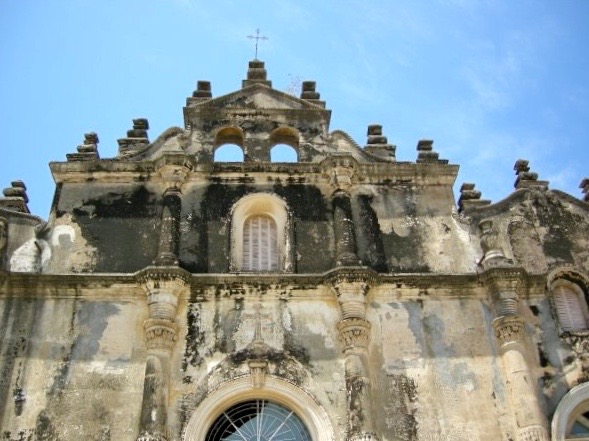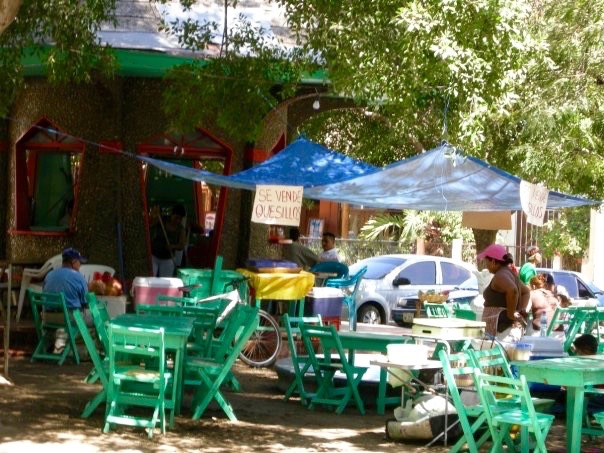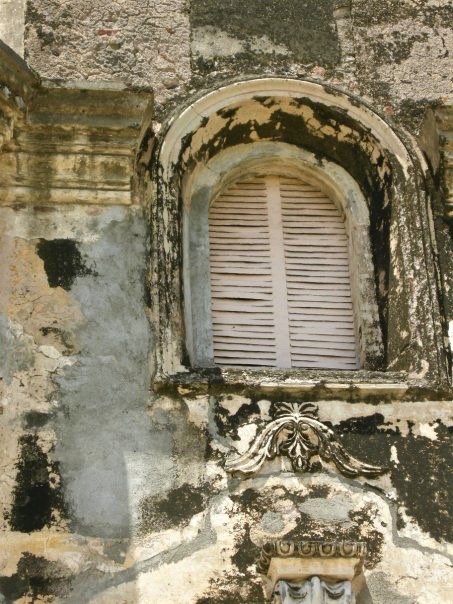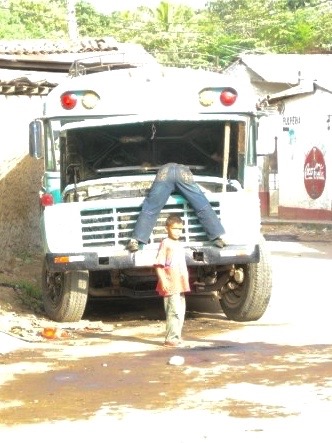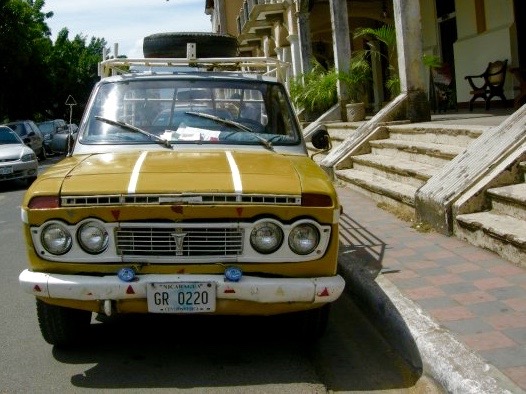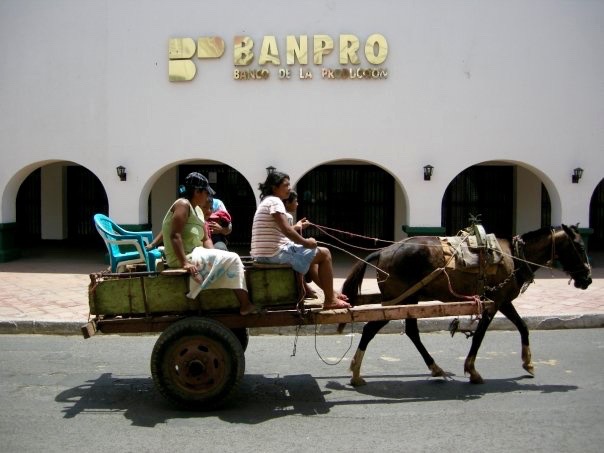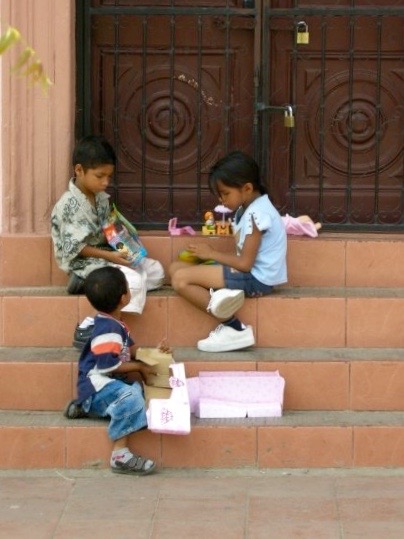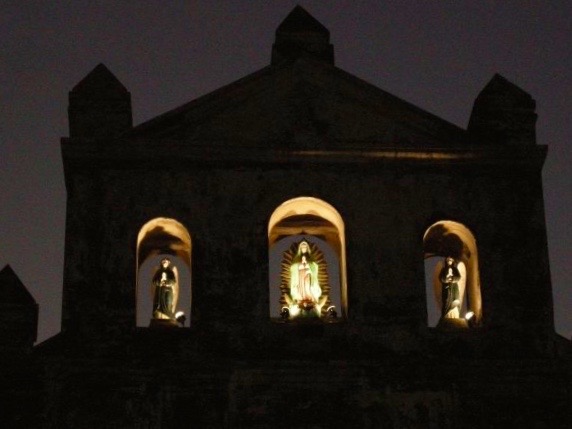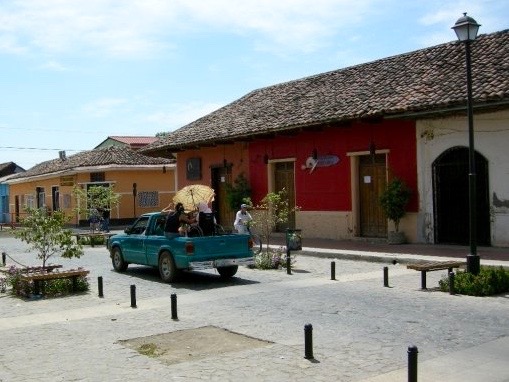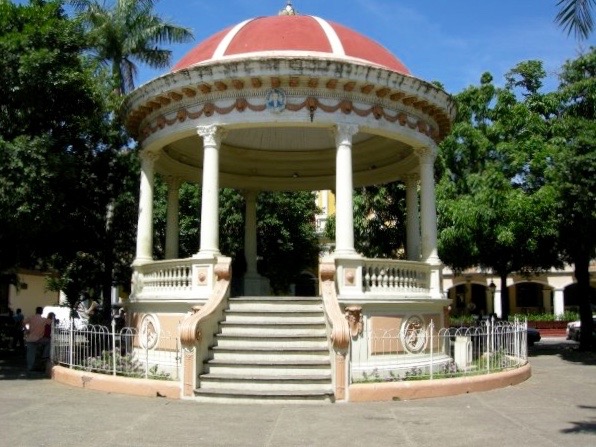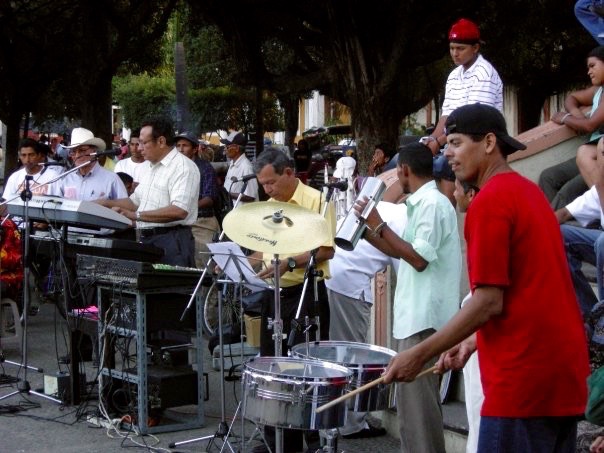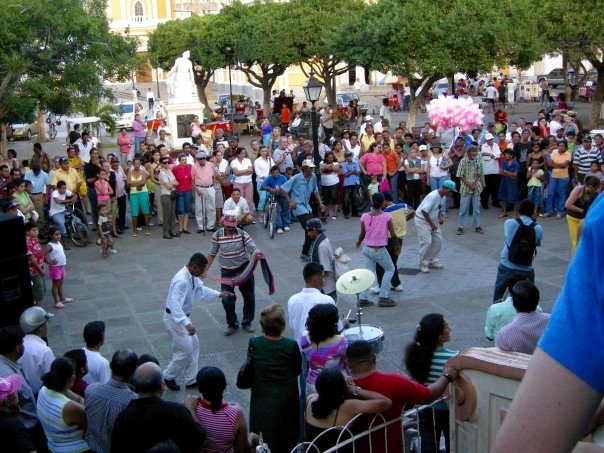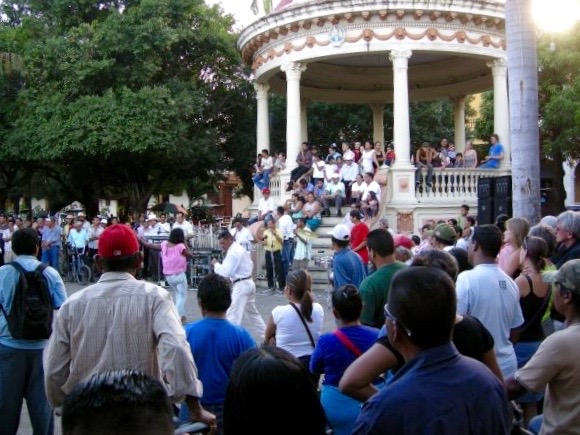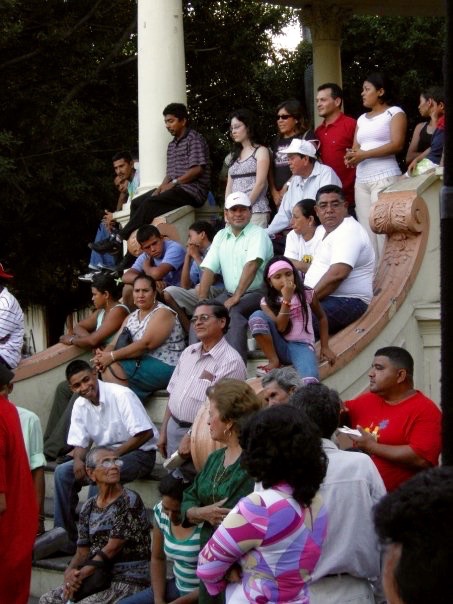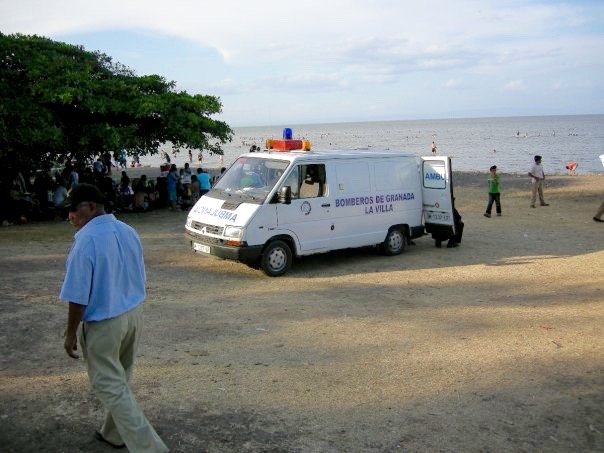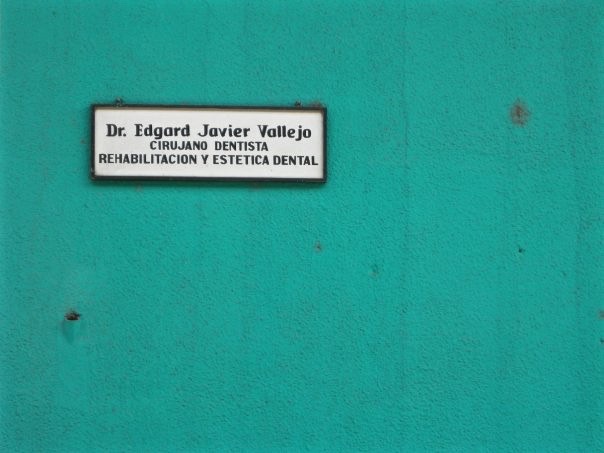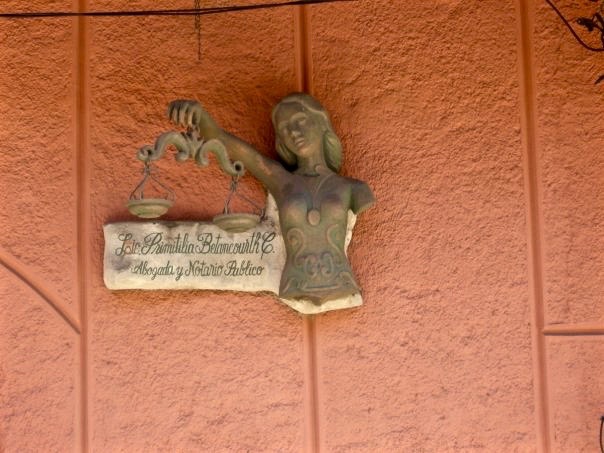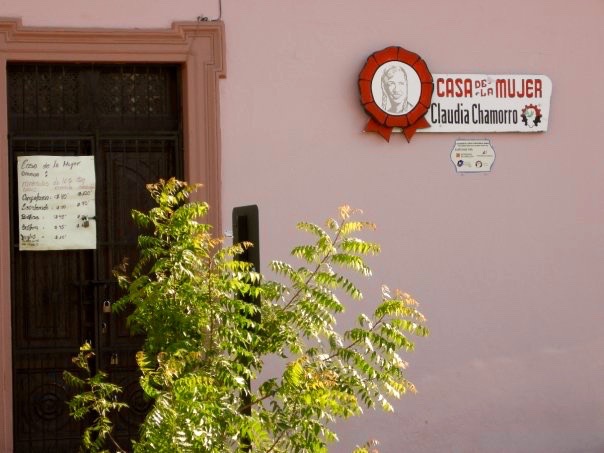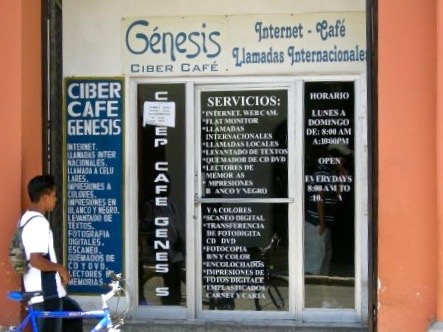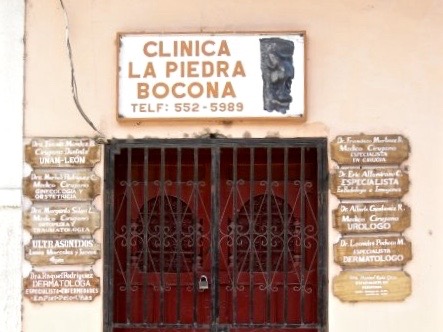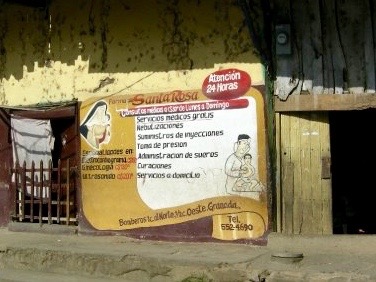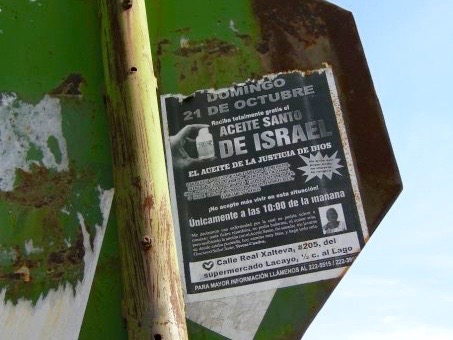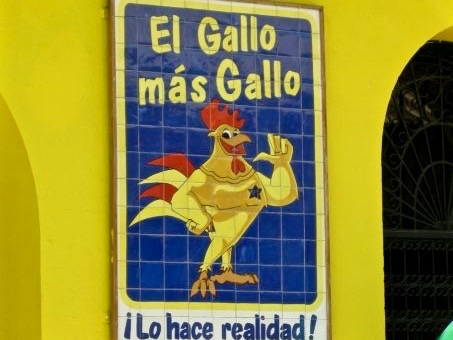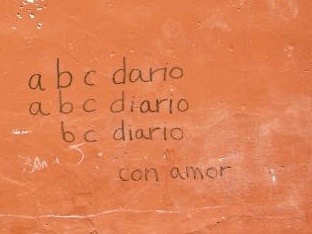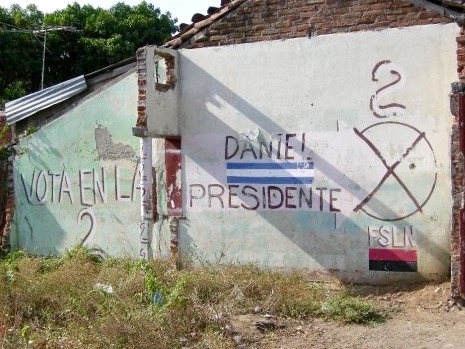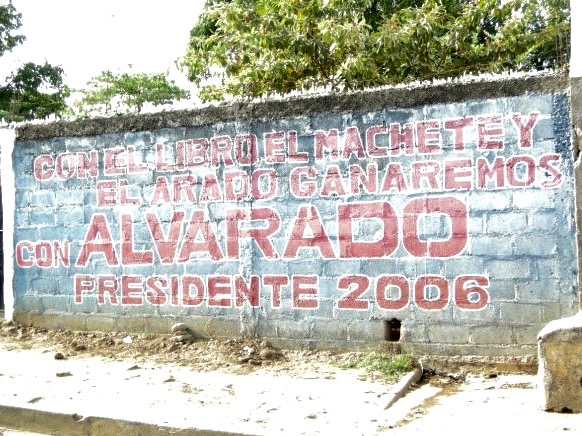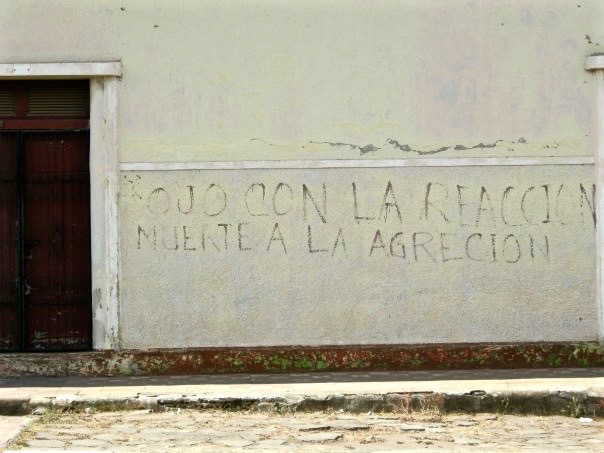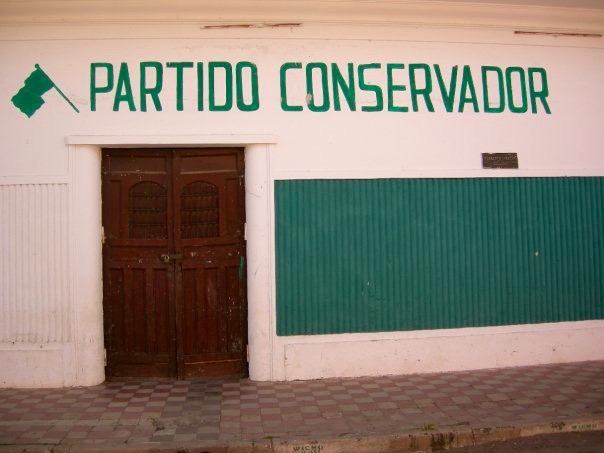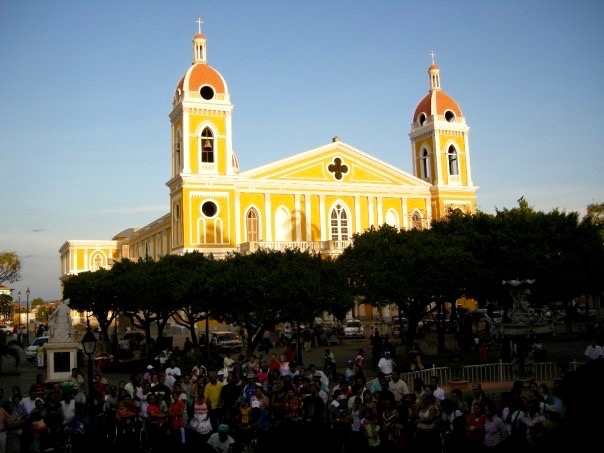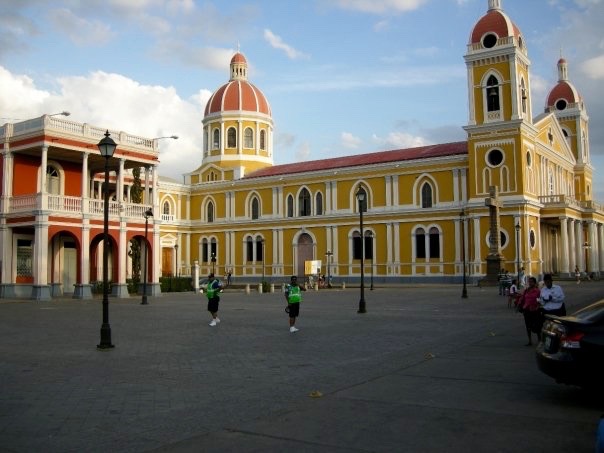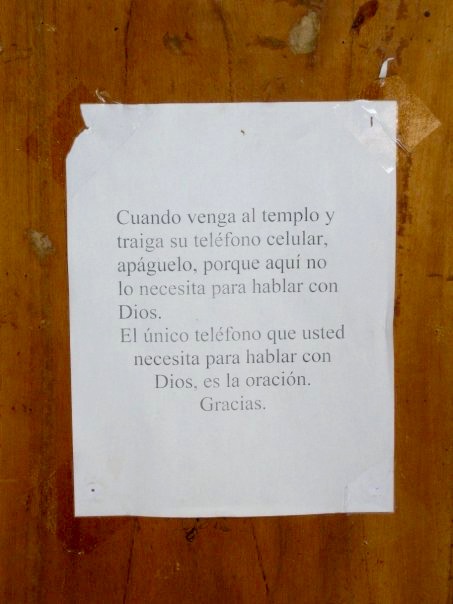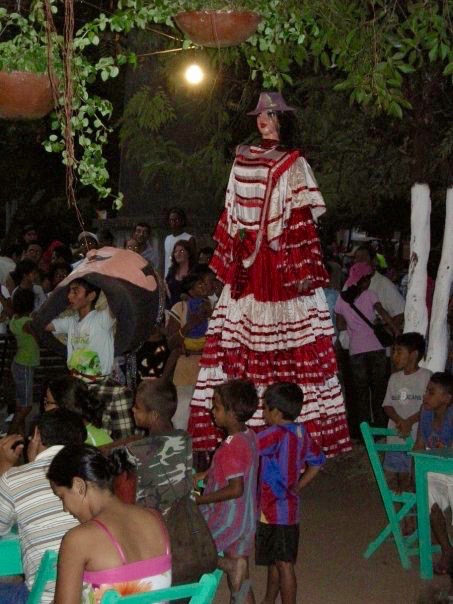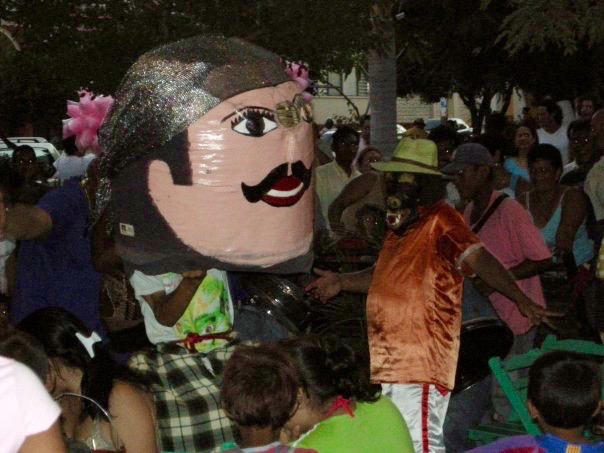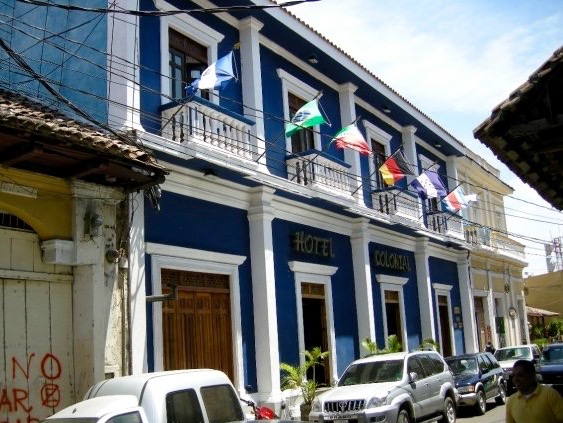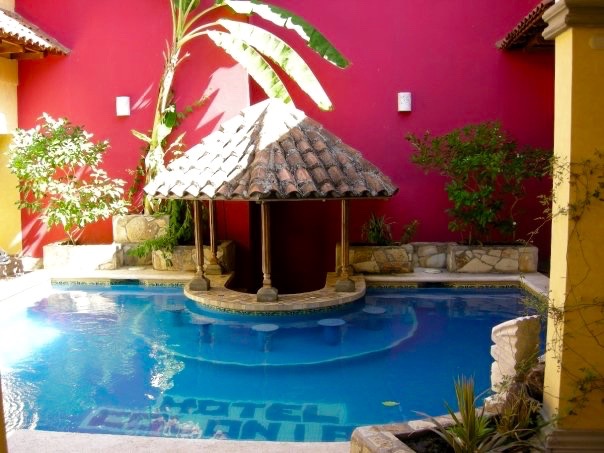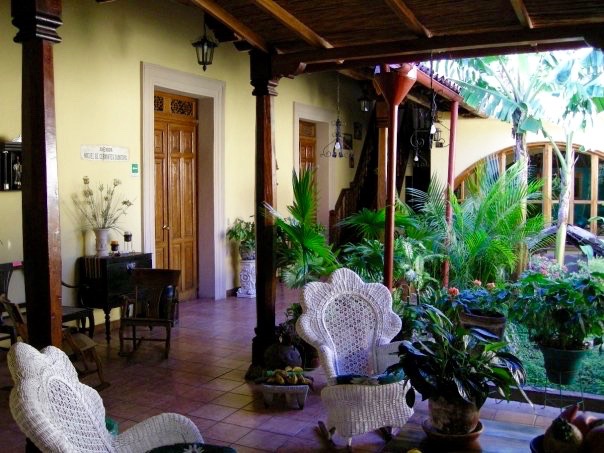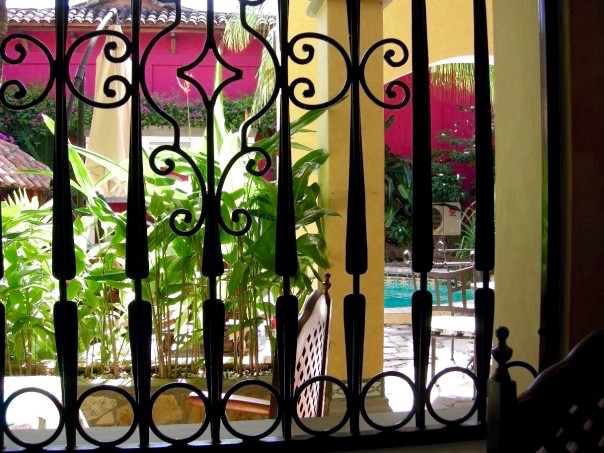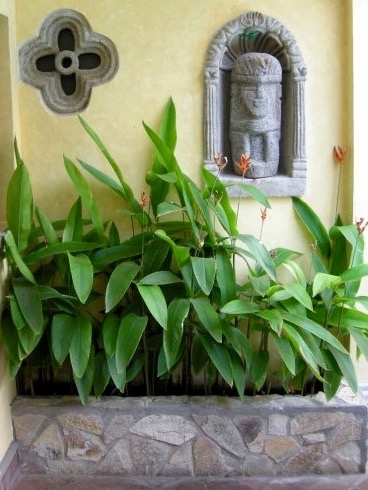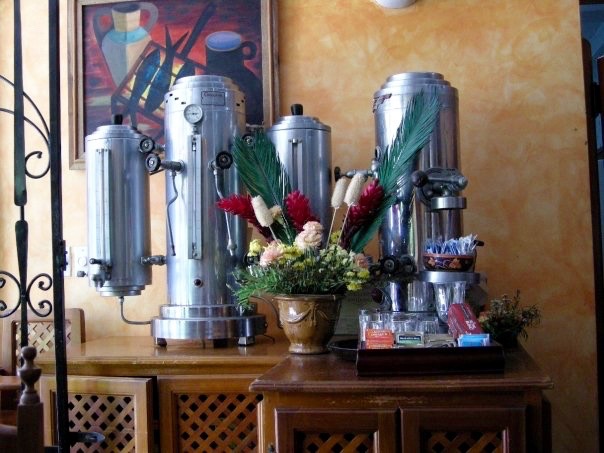Granada is located along the coast of the Lake Nicaragua, the world’s twentieth largest lake. It was founded in 1524 by Francisco Hernández de Córdoba, and claims to be the first European city on mainland America. In the first centuries after its founding, the city was witness to and victim of many of the battles with English, French and Dutch pirates for control of Nicaragua.
In more recent times, though, Granada avoided most of the violence of the aftermath of the Sandinista revolution in the 1970s and ’80s. Back in 2008, I found a city that had managed to preserve and restore much of its Spanish colonial architecture and its pleasing public streets and squares. I’m not alone in this observation. The story is told that when Pope John Paul II visited Granada, he was so charmed by the town that he told the people not to change a thing.
When we first encountered this bandstand in a public park, it was empty as you see it here.
But the next time we happened by, it was mobbed with people. A band played. Different couples took turns dancing in front of the crowd, not so much to show off hot dance moves as to have their time in the limelight. The audience approved.
We headed down to Lake Nicaragua, not so much because we wanted to beach it, but because we wanted to scope out where we would be catching the ferry across the lake. It being a holiday weekend, many people were heading out for some sun and swimming.
